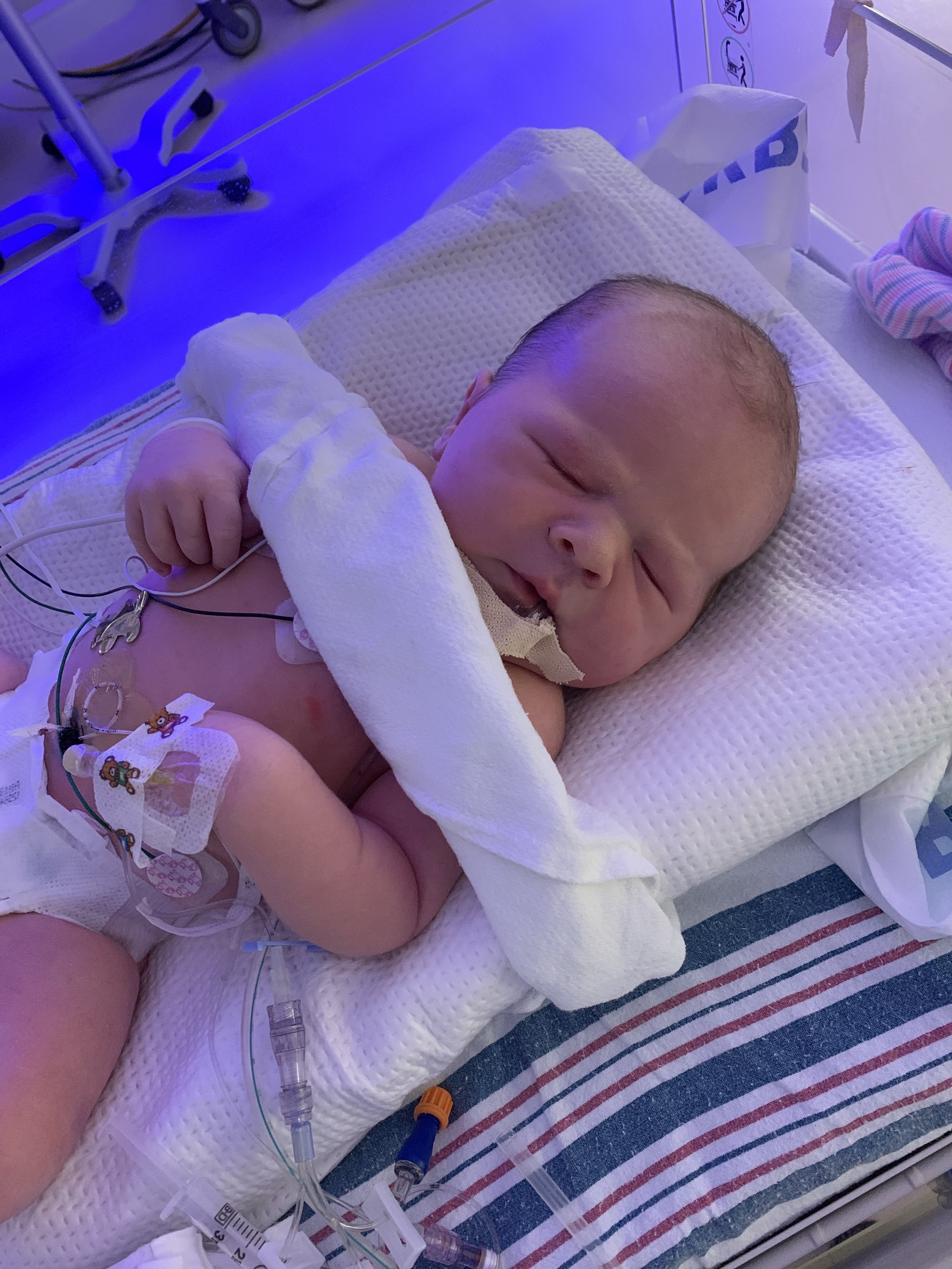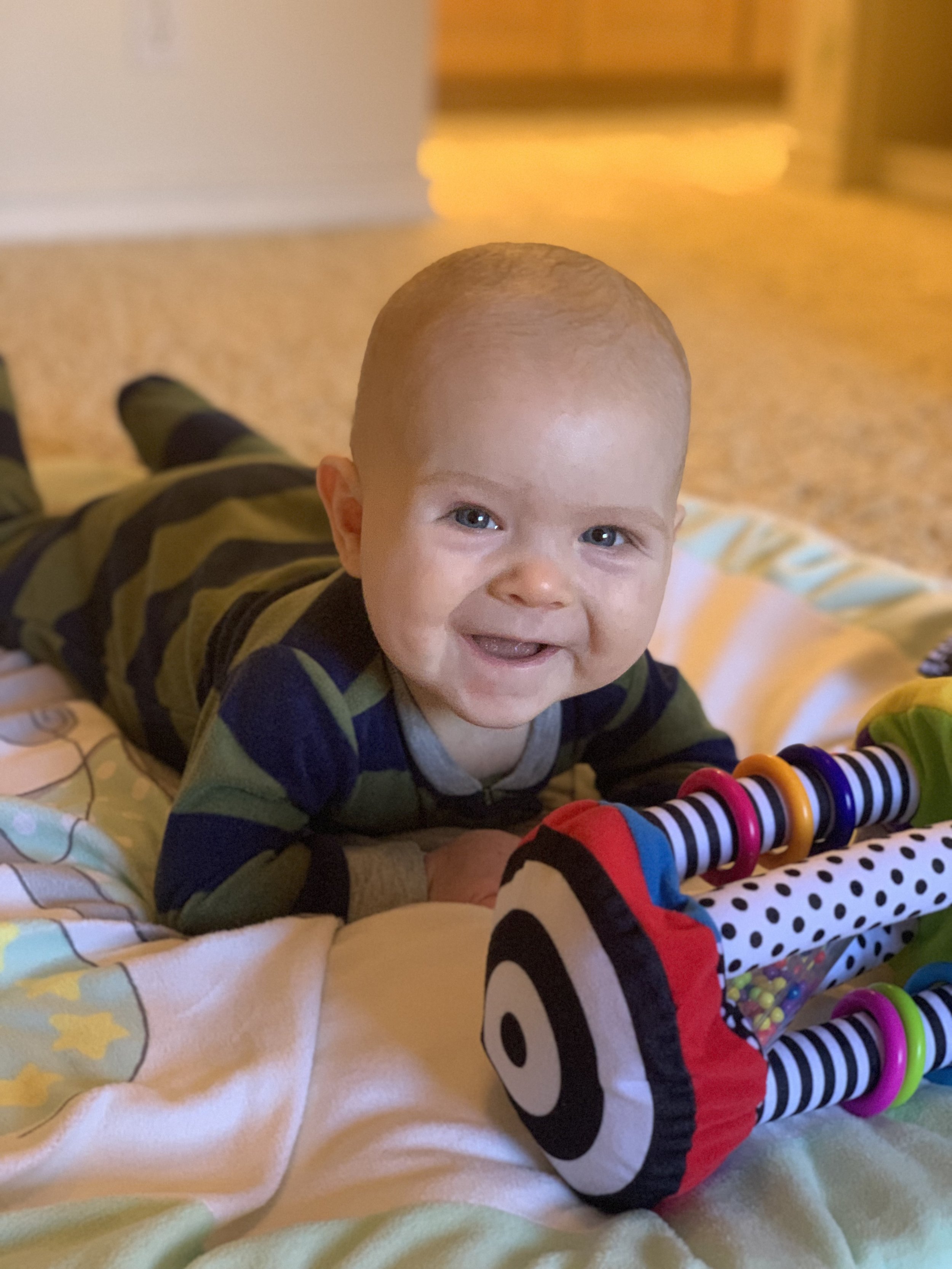Eli’s Story - Congenital Diaphragmatic Hernia (CDH)
On July 7th, at a routine 32-week ultrasound, our son Eli was diagnosed with a Left-Sided Congenital Diaphragmatic Hernia (CDH). We were blissfully oblivious just the week prior. We were just there to take measurements and confirm my due date (because he was a BIG baby). When our doctor shared the news, I was utterly shocked. I didn't hear much, "hole in the diaphragm, find a new hospital, survival rates, etc.," but my husband did.
Within 2 days, we were touring the NICU of St. David's Medical Center in central Austin, which provides level IV care. The shock faded after those 2 days, and we accepted the reality of our situation. His case was not labeled "severe" as he had pretty good lung capacity, his liver was below the diaphragm, all four chambers of the heart appeared to be operating normally, the hole was not visible during our 20 weeks scan giving his lungs more time to develop, and he was a big baby--already measuring 6.5 lbs at 32 weeks.
Elijah Diggs Trebon was born on August 23rd. He surprised us all by measuring 10 lbs, 2 oz, 21.5 inches. Eli came into the world and let out the most beautiful cries, giving Mom and Dad the instant assurance we needed. The on-hand neonatal team immediately checked his vitals in the delivery room. His oxygen levels were so good that he did not need extra breathing support and was taking in room air like a champ. I even got to briefly hold him right after the Replogle tube was placed before he was taken upstairs to the NICU with the team and my husband, Kel.
On August 26th, Eli had his surgery. Our surgeon, Dr. Julie Sanchez, went in with a scope first to see the size of the hole. We were again shocked that the hole in the diaphragm was bigger than expected, Type C (A being best, D being worst). His stomach, bowels, spleen, and part of the liver were in his chest cavity, essentially moving freely between his abdomen and chest, which gave his left lung room to expand (and why he had good oxygen levels). Thankfully our skilled surgeon, Dr. Sanchez, was able to repair the hole using Eli's own muscle and not a patch.
Eli was on a ventilator until August 28th. He was then put on CPAP for oxygen support, and a few days later, he was off of CPAP and transitioned to a nasal cannula. Two days later, the Replogle was removed, and Eli had his first 5 mL of breastmilk through a feeding tube.
On September 7th, the PICC line came out, and Eli was getting 100% of his nutrients from breastmilk. For the next 21 days, Eli purely worked on breast and bottle feedings—strengthening his lungs to be able to steadily breathe while eating and literally stomaching enough food to put on weight without needing to supplement via NG tube.
Towards the end of the 21 days, when he was working on eating and couldn't quite finish his feeds, a feeding tube was mentioned a couple of times. Thank goodness for Dr. Tao, who wanted to find any solution other than to send him home with a tube. They had floated around the idea of me staying at the hospital to exclusively breastfeed on demand. We agreed to try this for 2 days, and he impressed everyone with his ability to nurse on demand and put on 1 ounce per day. After 37 days, our Eli came home and met his big brother. We thank God for ultimately being in control of our entire journey.
Eli is now 5 months old and is truly thriving. We know his journey was unique and that not all CDH babies come home without breathing or eating support. For that, we are eternally humbled and grateful. We are also so thankful for the amazing neonatologists, surgeons, and NICU nurses (who cared for and loved our baby when we couldn't) at St. David's. We went through some very dark times before he was born and throughout the early days of his life. I'm here to tell you to have faith—there absolutely is hope for these CDH warriors.



